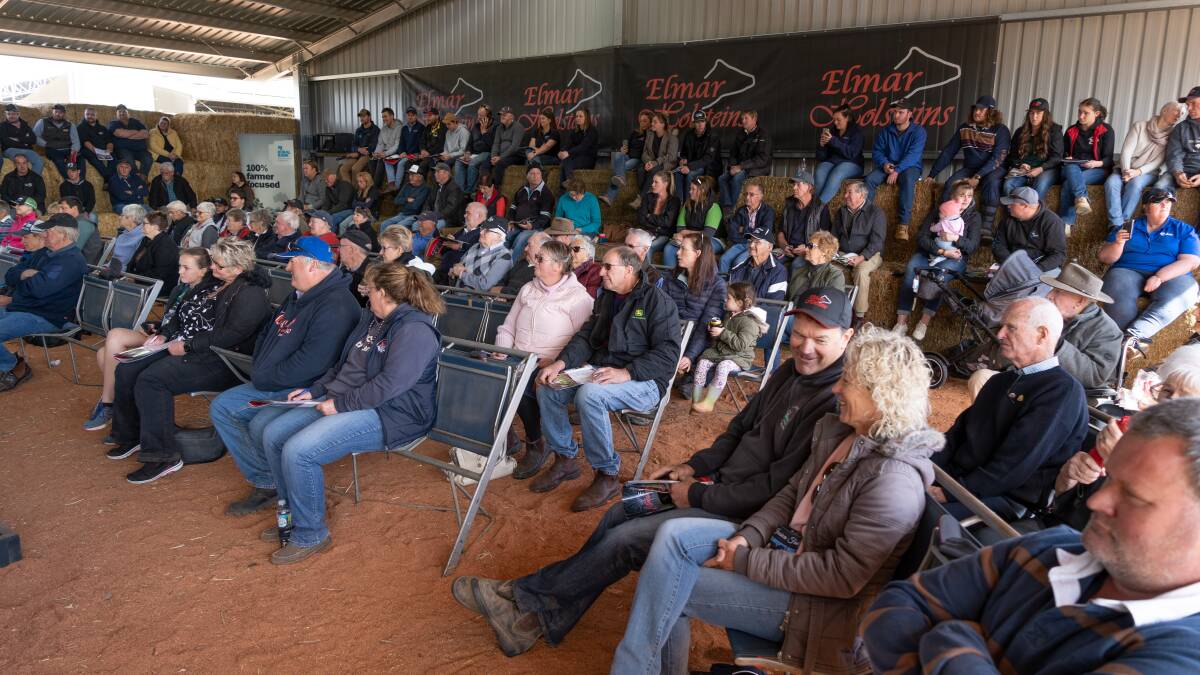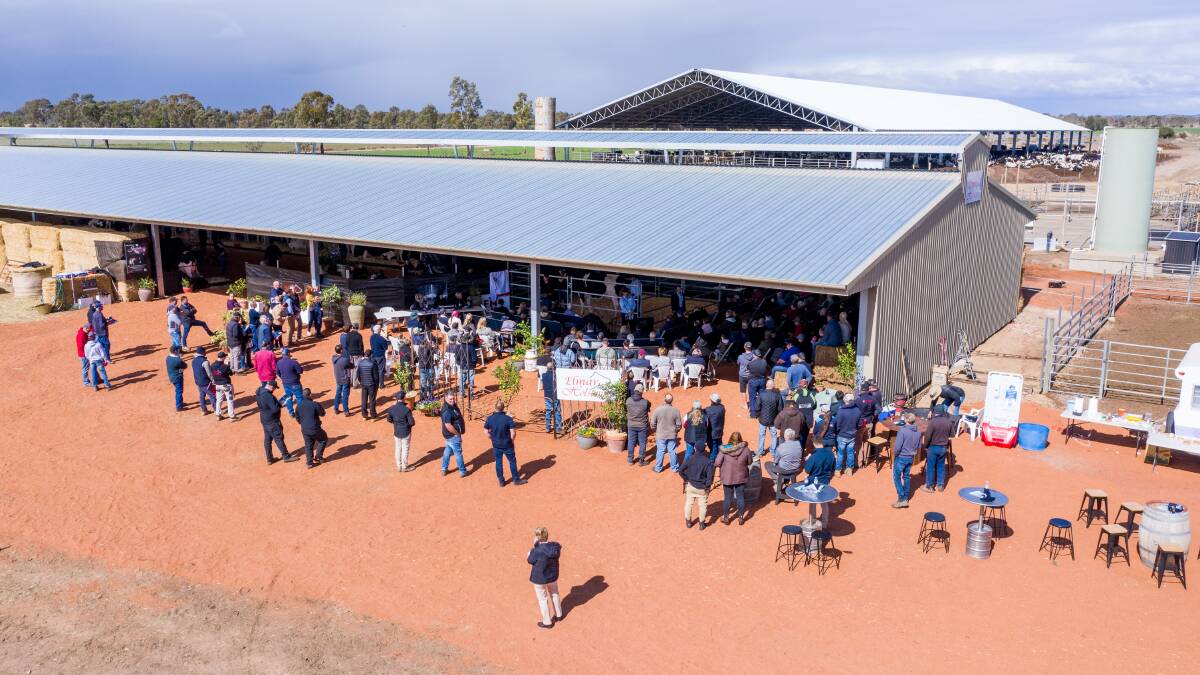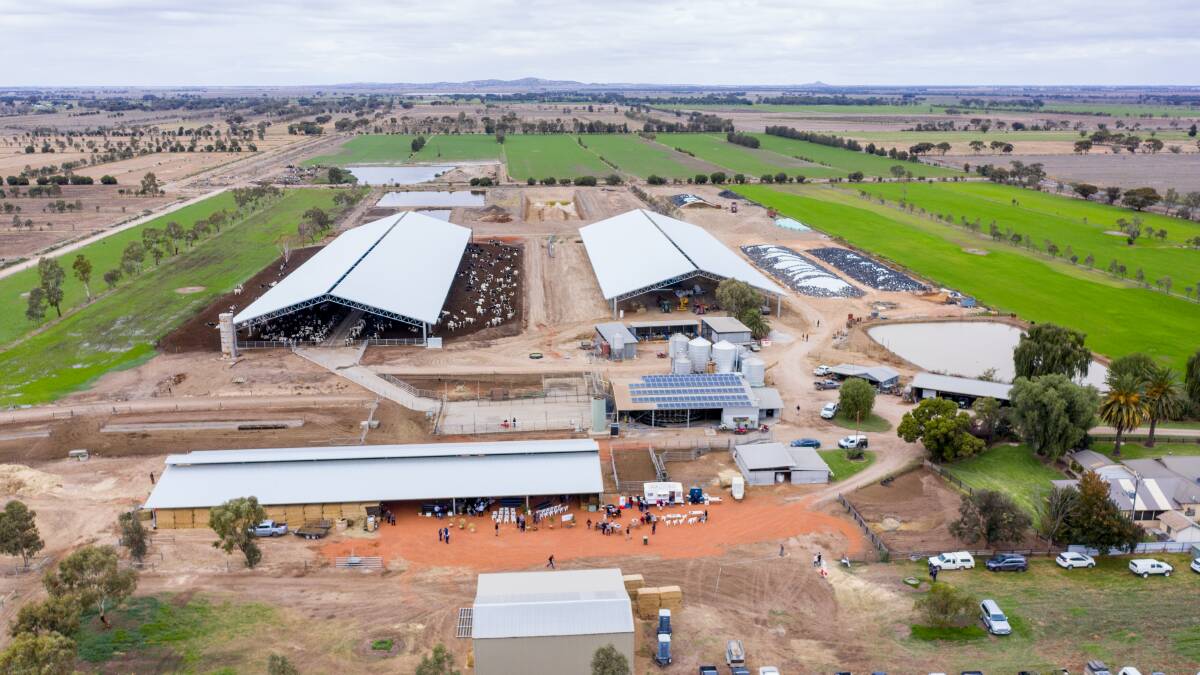Holstein sale etched in record books

Story in partnership with Entegra.
The bids came in thick and fast. Twenty-two thousand, $24,000, $26,000. The crowd, seated in a semi-circle around the ring, was silent. All eyes were on the Holstein cow, being paraded in the centre of the action.
Thirty thousand, $32,000 - "the money is online now" - auctioneer Nick Flanagan boomed into the microphone. A statement of fact, but also a reminder to those in the front row seats that competition for this cow wasn't just coming from within the sale shed.
Prices got to $38,000 before the pace slowed. "She ticks every box you put in front of her," he spruiked. This bumped the bid to $40,000.
"I'll take halves," was the next instruction from the podium. A cry for $41,500 followed. Slowly, but steadily, prices crept higher in $500 increments.
At $45,000, the call of "one more time" signalled the end was close. The crowd held its collective breath, as heads started to turn and people's eye's darted across the audience.
Onlookers were searching for the bidder - the one being dared to spend that little more to secure the prize. And it came:
"$45,500, it's $45,500 going once, twice and third and final time," then the gavel came down with a whack against the top of the rostrum. Applause erupted.
In just over two minutes, the Hore family - dairy farmers and owners of the stud breeding operation Elmar Holsteins in northern Victoria - were on their way to making history.
This cow, Elmar Solomon Jessica 7 ET VG89, was the top price of the day and one of 32 female descendants from the "Jessica" cow family which were sold as part of the on-farm auction.
These 32 "Jessica's" averaged $12,500. But eight daughters from Elmar Holstein's matriarch cow, Elmar Goldwyn Jessica 11 ET EX92, averaged $18,833. The entire sale - 59 female lots offered by Elmar Holsteins - averaged $10,355.
This is believed to be the highest single vendor dairy sale average in Australia's history, according to selling agents Flanagan Marketing Services.
For Steven and Deanne Hore, Elmar Holsteins stud principals, holding this title was icing on the cake of an otherwise memorable day for their family, including daughter Kelsie and sons Marty and Brady.
"We were stoked at how well the cattle sold," Steven said. "To have that really high average and to be the highest breeder average sale ever, is probably a reflection of our families and the type of cattle we have sold after many years of breeding."
Chasing genetics
There was no doubt about it - buyers had registered for the Elmar sale to get their own piece of the "Jessica" cow family.
It was a rare opportunity to own a part of the famous Holstein maternal line that had won so many broad ribbons on the show circuit.
This was certainly the case for buyers of the top price cow, Les and Louise, Tim and Amanda, Lloyd and James Calder.
The Holstein breeders from Meeniyan in South Gippsland had eyes for one lot and understood the value of her genetics.
The Jessica genetics entered the Elmar Holsteins herd decades earlier, when Steven - then a 16-year-old - purchased a "nice young calf". The progeny of this first calf, became the first "Jessica" at Elmar.
Three generations later, Elmar Leader Jessica graced the local dairy show circuit and her accomplishments garnered international attention. A dynasty had begun.
"The Jessica's are really sought after because of their show success. International Dairy Week is one of the biggest shows in the southern hemisphere and we have done really well there," Steven said.
"The Jessicas have been either grand, reserve or intermediate champions there numerous times. It was not that long ago we had champion, reserve and honourable mention with all three Jessicas. They were bred by us, they are owned by us and they were shown by us."
Elmar's IDW clean-sweep - when the stud won champion, reserve and honourable mention with three Jessica's - was in 2015.
Etched into the record books, Steven and Deanne described it as "the biggest day of our lives". Three years later, the reserve champion cow in 2015, - Elmar Goldwyn Jessica 11 - would be crowned Supreme Exhibit at IDW.
Breeding pinnacle pedigrees

Sales with the profile and success of the Elmar Extravaganza were rare in the Australian dairy industry.
Mostly, sales like this would be stud complete dispersals - where all the animals are sold, according to dairy breeding industry veteran Jim Conroy.
But occasionally, there's been a "reduction sale" that's ticked all the boxes.
"It's when you get the right people, putting the right cattle up, and presenting them in the right manner," Jim said.
"First of all, you have to have a product. There's a lot of background work that has gone into making sure those cows and their predecessors and descendants are all of very correct type, well managed and healthy," he continued.
"Then when you come to have a sale, you present them with all of their history, their pedigree and the knowledge that we know of them around IDW and the Melbourne Show and any other events they were involved in over the years."
"With a family like the Hores, you are talking three generations...presenting cattle of a high standard and marketing them throughout the industry."
Jim Conroy OAM was the general manager of Semex Australia, a herd improvement and artificial breeding company. He's now a director of Semex Australia. In 2015, Jim received a Medal of the Order of Australia for his contribution to the cattle breeding industry.

Drawing on his 50 years of experience in the industry, Jim said the key to breeding a longstanding maternal line like the "Jessica's" was "identifying the genetics of a particular line of females that repeat themselves, time-after-time-after-time in a positive, manageable and suitable order".
"Anybody who has the will, the work ethic, the patience and the support of family and staff can do it," he said.
"But the number of people who go to those lengths over the long haul, say a minimum 25-year period, are limited. The industry changes, family changes, standards change, and some people get started and if it goes in a different direction, some give it away straight away. It's about commitment, work ethic, dedication and support."
During the past 50 years, Jim worked a lot with Elmar including buying some of their young bulls for progeny test programs and semen sales.
"People who manage these operations (elite breeders) do it because they have a passion for breeding and breeding the best," Jim said.
"I would say, as such, they also have an obligation to the people, the next echelon of people in the industry who want to have a good herd of cows, make good quality milk and make a good living. It's the trickle effect coming through from the top breeder herd's commitment, it trickles down to the next rung for them to use their genetics."
Jim said, like many elite breeding operations in Australia, the Hore family was always looking for new opportunities within their business and ways to expand or diversify.
Looking outside the square

Descendants of the 'Jessica' cow family make-up about 60 per cent of the Hore's year-round 450-strong milking herd.
In late 2018, the Hores erected their first Entegra shed. It represented a "real change" of farming for the family. The 150m by 45m compost dairy barn with concrete alley and flush lane, underpinned cow comfort while equipping the business with the infrastructure to handle fluctuating seasons.
"We've been able to feed our cows really well and with the weather, if it is hot or cold, the cows are comfortable," Steven said.
"For us it has given us a lot of structure, cow comfort and production. We love it that much we have built a second one."
Housing dairy cows year-round in Australia is a new development for the industry. Previously, most Australian dairy herds grazed pastures or crops throughout the year, with grain, pellets and fodder supplementing cow's diets when this wasn't possible.
Taking the feed to cows, whether they are housed on a feed pad or in a barn, is called a total mixed ration system. This feeding and business model has been popular in the US and EU.
In 2019, Dairy Australia reported about three per cent of Australian dairies operated with a total mixed ration system. This was up from one per cent in 2017.
It's unclear what proportion of these TMR dairy farming systems include barns or house cows year-round. But anecdotal evidence suggests the number of farmers using barns in their dairy business has increased.
Barns make cents

Consistency is the key to dairy farming - for both cows and humans. Operating a housed-cow dairy has helped the Hore family improve efficiencies and boost production.
For example, cows go to the same side of the barn, get the same ration, and are milked at the same time each day, Steven said. Operating like "clock-work" has meant the weather no longer influences the herds' temperament or production.
"I think our production is really flat now," Steven said.
"When we were grazing, we'd have big spikes in the spring and big lows in wet and cold weather. Our farm production rarely varies now."
The Hores have started to calve cows year-round and in the coming years plan to have 450-500 cows in peak production for 12 months.
"When cows are grazing it is pretty hard to do that, you have highs and lows with the weather, feed availability and feed quality. (So) that alone is really good for our business for cash flow," Steven said.
After such a successful inaugural sale, the question on many dairy breeders' minds is - will there be another Elmar Holsteins sale?
"Not straight away. It's been a massive amount of work and a lot of planning in a pretty short time," Steven said.
We have other cattle available for sale, so whether we have a sale or sell some privately, we are not sure. We are still active in the dairy industry and milking the same amount of cows, so we will have an excess."
Story in partnership with Entegra.


